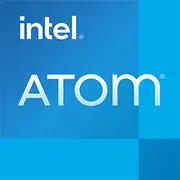Intel Atom Z2760

Intel Atom Z2760 (Cloverview): A Review of the 2012 Ultra-Mobile Processor from the Perspective of 2025
Introduction
The Intel Atom Z2760 processor, released in 2012 under the codename Cloverview, was part of an era when the market for ultra-portable devices was just beginning to take shape. Now, in 2025, this chip appears archaic, but its legacy of energy-efficient solutions for tablets and netbooks remains relevant. In this article, we will explore how the Z2760 managed the tasks of its time, what lessons the industry learned, and who might find a device based on such a platform useful today.
1. Architecture and Process Technology: Modest Ambitions for Compact Devices
Cores, Threads, and Frequencies
The Atom Z2760 is built on the Saltwell microarchitecture (the second generation of Atom) with a 32 nm process technology. It is a dual-core processor with support for two threads (2C/2T), operating at a base frequency of 1.8 GHz. There is no turbo mode, which is typical for budget solutions of that time.
CPU and iGPU Features
- CPU: The Saltwell architecture is optimized for low power consumption but not for high performance. SSE3 instructions and Hyper-Threading are absent.
- iGPU: Integrated Intel GMA (Graphics Media Accelerator) graphics operating at 533 MHz. It supports 1080p video decoding through hardware codecs but is inadequate for 3D rendering.
Cache and Memory
- L2 Cache: 1 MB (shared between the two cores).
- Memory Support: Single-channel LPDDR2-800 with a maximum capacity of 2 GB.
2. Power Consumption and TDP: A Revolution in Miniaturization
TDP of 3W: How It Works
With a thermal design power of just 3 W, the Z2760 became a benchmark for energy efficiency in tablets and hybrid devices. For comparison, modern processors for smartwatches have similar specifications.
Cooling and Heat Dissipation
- Passive Cooling: Most devices utilizing the Z2760 operated without fans.
- Temperature Regulation: Even under full load, the chip did not overheat, allowing for enclosures less than 10 mm thick.
3. Performance: Modest Capabilities for Basic Tasks
Office Work
- Example: Microsoft Office 2013 launched without delays but with limitations:
- Working simultaneously with 5+ tabs in Chrome caused slowdowns.
- Converting PDF to Word took 2-3 minutes (compared to 20 seconds for a 2025 Core i3).
Multimedia
- Video: Playback of 1080p/30fps (H.264) through hardware acceleration.
- Audio: Support for HD audio, but lacking resources for advanced sound processing.
Gaming
- Capabilities: Only 2D games and simple 3D projects (e.g., Angry Birds).
- FPS in CS:GO: Less than 15 frames per second on minimal settings.
4. Use Cases: Who Was the Z2760 Designed For?
Target Audience in 2012
- Students: For note-taking and reading PDFs.
- Travelers: Compact tablets with 8-hour battery life.
- Business Users: Checking emails and calendars.
Relevance in 2025
- Retro Gadgets: Collectors and enthusiasts.
- Special Tasks: Terminals for displaying information, electronic menus.
5. Battery Life: How 3W Changed the Game
Battery Operating Time
Devices using the Z2760 (e.g., Dell Latitude 10) provided 8-10 hours of usage under load:
- Web browsing: 9 hours.
- Video: 7 hours.
Power-Saving Technologies
- S0ix (Connected Standby): Instant wake mode, similar to smartphones.
- Dynamic Voltage and Frequency Scaling (DVFS): Automatic frequency reduction during idle.
6. Comparison with Competitors: Who Was Stronger?
AMD C-60 (2011)
- Pros: Better graphics with Radeon HD 6290.
- Cons: Higher TDP (9W), less battery life.
Apple A6 (2012)
- ARM Architecture: Optimized for iOS, smooth interface.
- Performance: A6 in the iPad Mini outperformed Z2760 in single-core tests by 40%.
Intel Atom N2800 (Previous Generation)
- 45 nm process: 20% more power consumption.
7. Pros and Cons: Why Did the Z2760 Become Iconic?
Strengths
- Record energy efficiency.
- Compact form factor of devices.
- Low cost: Tablets on the Z2760 ranged from $300 to $400.
Weaknesses
- Weak multitasking abilities.
- Outdated graphics.
- Limitation of 2 GB RAM.
8. Recommendations for Choosing a Device in 2025
Types of Devices
- Tablets: For example, the Asus VivoTab Smart.
- Hybrids: Keyboard docks turning them into laptop-like devices.
What to Look for Today
- Price: Used devices - $50-$80. New (if available) - up to $150.
- RAM: Look for models with 2 GB.
- Screen: IPS panels with a resolution of 1366x768.
9. Conclusion: Who Would Benefit from the Atom Z2760 in 2025?
This processor is an artifact of the era when mobility began to prevail over power. Today, it can be useful for:
- Enthusiasts: For experimenting with lightweight operating systems (Lubuntu, Android x86).
- Businesses: As a cheap terminal for displaying data.
- Children: The first computer for learning.
Key Benefits:
- No cooling required.
- Powered by micro-USB.
- Runs Windows 8.1/10 LTSC.
Conclusion
The Intel Atom Z2760 exemplifies how engineering compromises shape the market. Today, when even budget processors like the Intel N100 offer 10 times the performance at the same TDP, Cloverview reminds us of the early journey toward true mobility. If you're looking for a device for basic tasks, Z2760 might still be your pick. But for most, it’s already history, worthy of a museum.
Basic
CPU Specifications
Memory Specifications
GPU Specifications
Benchmarks
Compared to Other CPU
Share in social media
Or Link To Us
<a href="https://cputronic.com/en/cpu/intel-atom-z2760" target="_blank">Intel Atom Z2760</a>